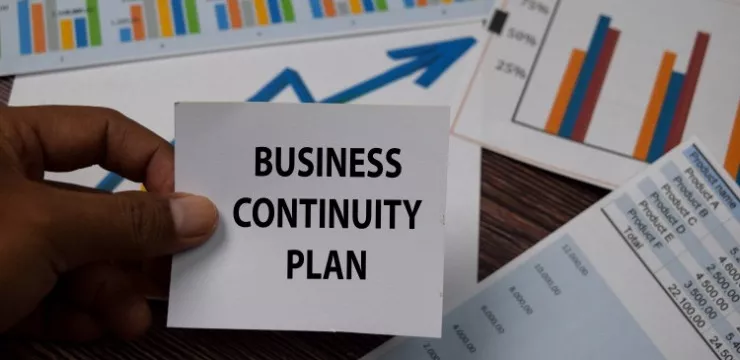
A BCP (business continuity plan) can help organizations dramatically reduce the negative effects of disruptions.
However, it’s important to follow the proper steps when creating a plan.
In this article, we’ll explore:
- What a business continuity plan is
- How it can benefit your organization
- How to create a plan the right way
To start off, let’s clearly define what a continuity plan is, what it is not, and its role in improving organizational resilience.
What Is a BCP (Business Continuity Plan)?
A number of events and circumstances can disrupt an organization’s ability to function normally.
Natural disasters, for instance, can damage the physical workspace and equipment, while also preventing employees from working on-site. These types of disruptions can obstruct normal operations and significantly harm profit margins.
Fortunately, with the right measures, it is possible to respond effectively and mitigate those negative impacts.
This is the purpose of a business continuity plan, or a BCP.
These response plans are specifically designed to reduce those impacts by:
- Coordinating a swift response to disruptions
- Protecting the most critical business functions during a disruption
- Restoring normal operations and functions as quickly as possible
Business continuity management is dedicated to developing and coordinating these responses, primarily through the implementation of business continuity plans.
How to Design a BCP the Right Way
To achieve the benefits mentioned above, it is necessary to respond appropriately and efficiently.
Here are a few steps to follow when developing a continuity plan:
- Assess potential risks and threats. A great many factors can interrupt normal business operations, from cyber attacks to natural disasters to supply chain disruptions. Before actually designing a continuity plan, therefore, it is important to assess the risks that actually pose potential threats.
- Conduct a business impact analysis. A business impact analysis predicts how disruptions will impact the organization, with an emphasis on the financial effects. This information will be used to define recovery timelines and objectives, which will be incorporated into the business continuity plan.
- Develop strategies for responding effectively. Each type of disruption will require a different type of response. A fire that affects the workplace, for instance, should begin with an evacuation that is part of an emergency response plan. If the worksite remains compromised, then the continuity strategy may revolve around remote working, relocation, or other actions designed to maintain employee productivity.
- Initiate the plan by contacting key personnel. Most continuity plans should begin by notifying the business continuity team and other important parties, such as business leaders, customers, and government agencies.
- Protect key business units and functions. One of the main aims of a business continuity plan should be to protect the most important business functions and units. As with the other steps mentioned here, it is important to establish a clear scope and a specific strategy for each type of disruption or disaster.
- Restore lost assets and functions as soon as possible. Once the most critical business functions have been preserved, the continuity plan should outline a strategy for recovering business activities or assets that were lost. Recovery objectives and timelines should also be defined clearly, though naturally these guidelines will depend on the nature of the disruption.
- Evaluate the performance of the plan. Status reports, data, and other sources can be used to analyze the performance of the program. That information, in turn, can help business leaders and continuity managers understand what worked, what didn’t, and how to improve future versions of the plan.
Following these steps is an excellent way to mitigate the impact of a disruption and ensure business continuity.
However, it is important to note that business continuity plans are not the only way to reduce the impacts of such disruptions.
What a BCP Is Not
A business continuity plan can certainly improve organizational performance during disasters and business disruptions, but they are not a cure-all.
To develop true resilience against disruptions such as these, it is is important not only to respond effectively, but also to develop organizational resilience.
This can mean:
- Improving digital maturity and digital literacy, which can improve employees’ ability to work effectively in the face of a wide variety of disruptions
- Implementing policies and procedures to mitigate workplace-related risks, such as accidents and hazards
- Creating emergency response plans, which outline the actions to take in the first few minutes following a disaster or emergency
- Deploying software and tools that improve IT resilience, such as disaster recovery tools and cybersecurity systems
In short, while business continuity plans are excellent ways to improve the organization’s ability to respond effectively during a disruption, they are not the only strategies available. True organizational resilience requires a more comprehensive approach that includes business continuity, risk management, digital transformation, and other strategies designed to prevent and mitigate risk.
WalkMe Team
WalkMe spearheaded the Digital Adoption Platform (DAP) for associations to use the maximum capacity of their advanced resources. Utilizing man-made consciousness, AI, and context-oriented direction, WalkMe adds a powerful UI layer to raise the computerized proficiency, everything being equal.



